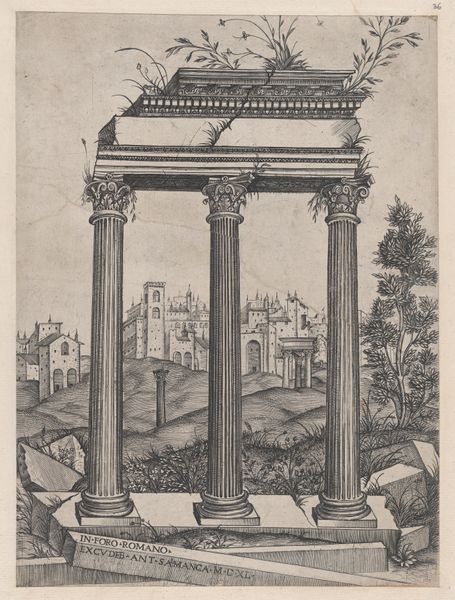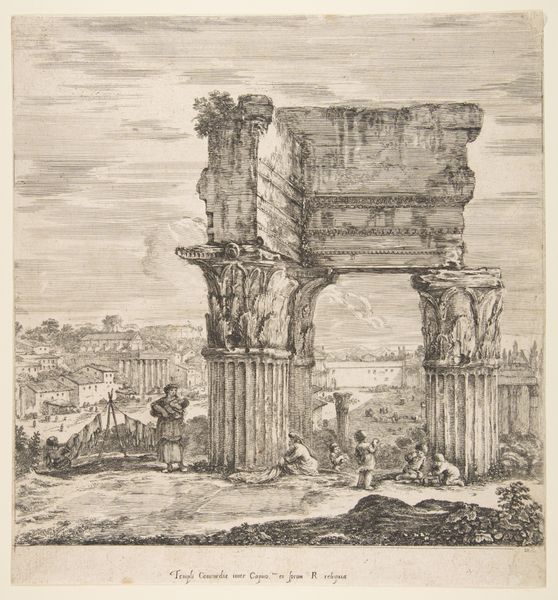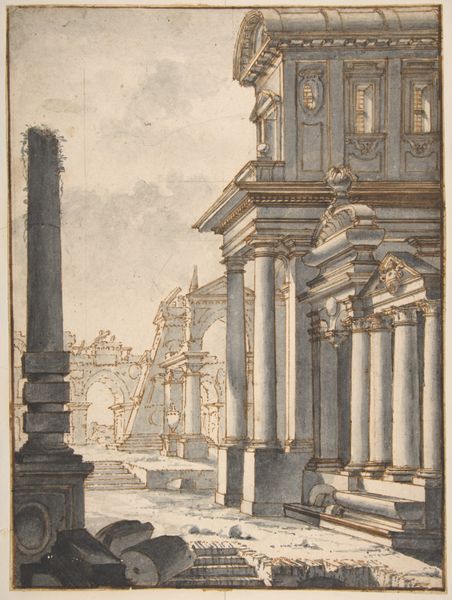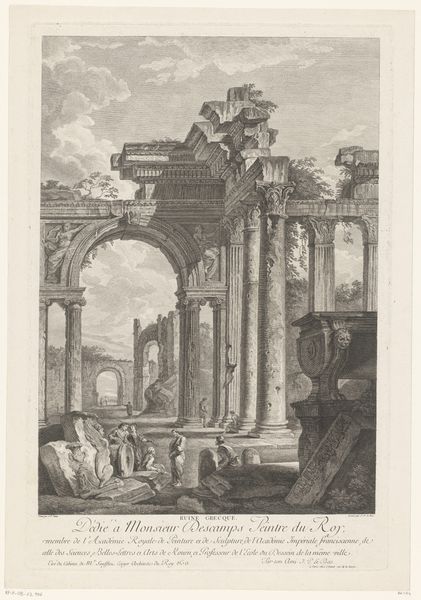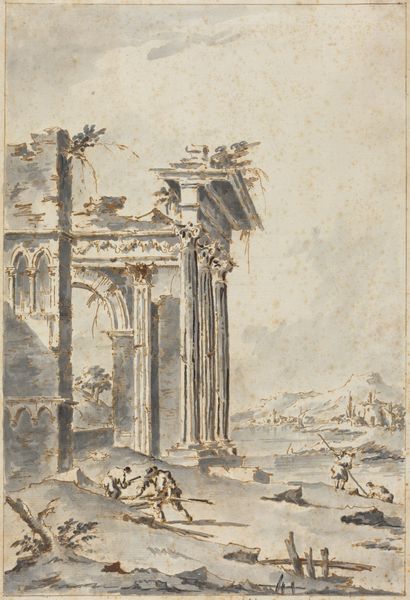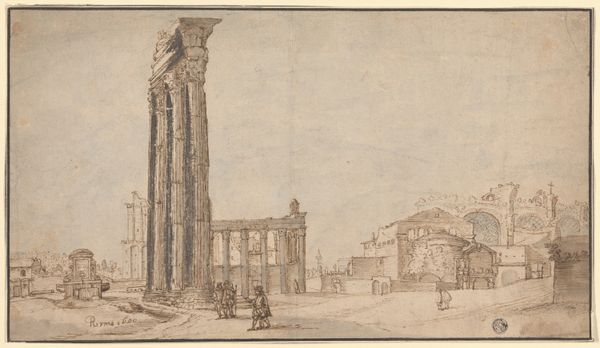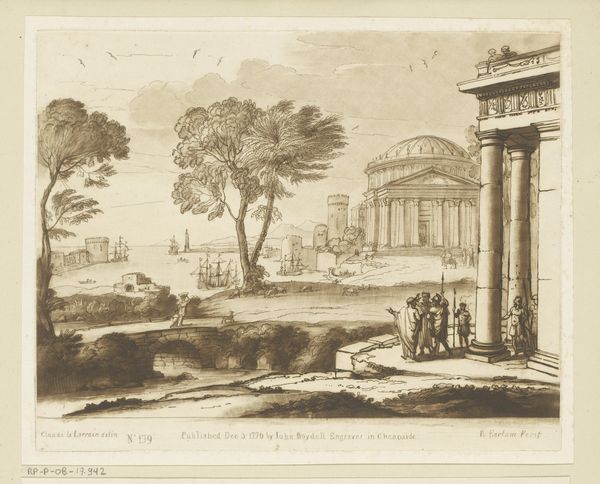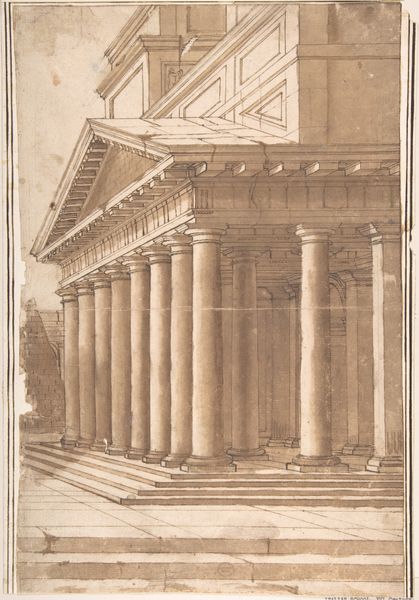
Speculum Romanae Magnificentiae: Portico of the Temple of Julius 1550
0:00
0:00
drawing, print, etching, engraving, architecture
#
drawing
# print
#
etching
#
classical-realism
#
perspective
#
ancient-mediterranean
#
cityscape
#
engraving
#
architecture
Dimensions: sheet: 18 7/8 x 13 1/8 in. (48 x 33.4 cm) plate: 11 9/16 x 8 1/4 in. (29.3 x 21 cm)
Copyright: Public Domain
Editor: This etching from 1550, "Speculum Romanae Magnificentiae: Portico of the Temple of Julius," portrays a ruined architectural site with stunning detail. What strikes me most is the contrast between the grand columns and their state of decay. What do you see in this piece? Curator: I see a potent commentary on the cyclical nature of power and the inevitable decline of empires, a critique, if you will, on the fleeting nature of authority. The Temple of Julius, once a symbol of imperial might, is here presented in a state of ruin. It's easy to look at these engravings as purely representational, but consider what it meant to circulate images of Roman ruins during a period of intense political and religious upheaval. Editor: That’s interesting. I hadn't considered the image's circulation as part of its message. How might its distribution have impacted its meaning? Curator: Precisely! These images became tools, visual arguments within broader debates about power, legitimacy, and cultural heritage. Remember, the Renaissance was not simply a revival of classical forms; it was also a period of profound questioning about what constituted legitimate authority, divine right, and social order. In this context, how does representing the ruins as ‘deformed’ challenge the notion of Rome's unbroken lineage of power? Editor: I suppose showing them as broken down dismantles the perception of constant power and questions the status of authority in Rome at the time. It's a compelling way to look at the artwork, I hadn't appreciated those elements within it. Curator: By situating the artwork in the social landscape of 16th-century Rome, it challenges the viewer to question power structures that might seem permanent or inevitable, it also underscores the agency we can have when questioning established ideas.
Comments
No comments
Be the first to comment and join the conversation on the ultimate creative platform.
